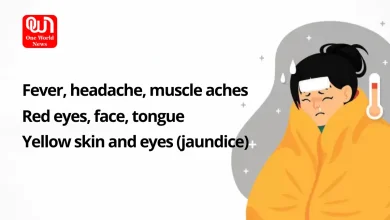
Symptoms and Precaution Against H3N2 Influenza
Two people, one from Haryana and one from Karnataka, have died from H3N2 influenza. Additionally, more cases of the virus have also been reported from other parts of the country. So, what is the H3N2, and is it really that dangerous?
What is H3N2 Influenza?
H3N2 is a subtype of the Influenza A virus. Type A influenza virus is a pathogen that infects humans and animals. Type A influenza is also the most likely to cause harm to public health due to its ability to infect people from human to human transmission and cause a pandemic.
H3N2 is classified as a swine flu influenza because of its origin host.
Indian Council of Medical Research (ICMR) tweeted the following to raise public awareness-
“Influenza A subtype H3N2 is the major cause of current respiratory illness. ICMR-DHR established pan respiratory virus surveillance across 30 VRDLs.”
Influenza A subtype H3N2 is the major cause of current respiratory illness. ICMR-DHR established pan respiratory virus surveillance across 30 VRDLs. Surveillance dashboard is accessible at https://t.co/Rx3eKefgFf@mansukhmandviya @DrBharatippawar @MoHFW_INDIA @DeptHealthRes pic.twitter.com/3ciCgsxFh0
— ICMR (@ICMRDELHI) March 3, 2023
According to the surveillance dashboard, 56 cases of H3N2 have been reported in the 9th Week of 2023 (February 26 to March 5) and more were reported in the previous weeks.
What are the symptoms of H3N2 influenza?
Just like other influenza infections, H3N2 causes respiratory infection (fever and cough) that can turn into more serious distress in respiration. Here are some symptoms you should watch out for-
- Cough
- Fever
- Nausea
- Chills
- Vomiting
- Sore throat
- Sneezing
- Diarrhoea
- Difficulty in breathing (if it progresses into the serious stage)
- Difficulty in swallowing food (if it progresses into a serious stage)
How long do the symptoms last?
The symptoms can last from five days to a week.
How dangerous is it?
H3N2 is highly contagious and can transmit easily from one person to another. It can be fatal only in the worst cases and if it escalates into a serious issue. Those with serious illnesses such as asthma, and respiratory issues should take extra precautions to avoid getting the flu.
Reasons for the spread of H3N2 influenza
The weather has seen a sudden shift from extremely cold to warm. Despite it being March, we have already started experiencing the strong sun, and this drastic shift in the temperature is seen as the primary reason for the spread of these flu symptoms. Flus are mostly seasonal and some seasons see more occurrences than other. Air pollution also makes the symptoms of the flu worse.
How to prevent it?
Personal protective measures are key to avoiding catching the flu. Basic steps that must be followed by all include:
- Washing hands regularly
- Keeping mouth and nose covered
- Cleaning nasal passage regularly
- Using tissues when sneezing and disposing of them correctly
- Avoid touching eyes, face and mouth without washing hands
Special care should also be taken while travelling to countries that have a high risk or a known outbreak of influenza. Avoiding poultry food is always advisable in such circumstances.
Post-exposure, it is advised that you have plenty of fluids, maintain proper hygiene and avoid contact with people. Steam inhalation, and gargling with saline water should also be carried out alternatively.
Antiviral drugs can also help in the treatment but should be taken only after consultation with the doctor.
Like this post?
Register at One World News to never miss out on videos, celeb interviews, and best reads.








